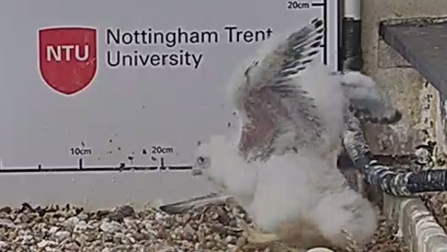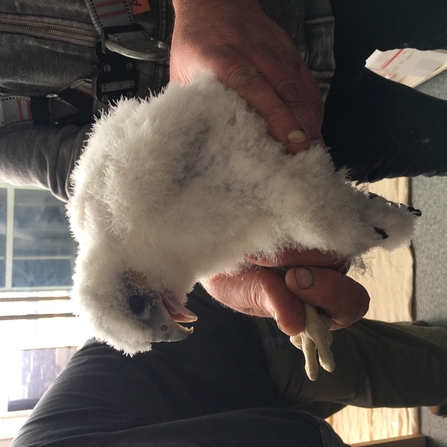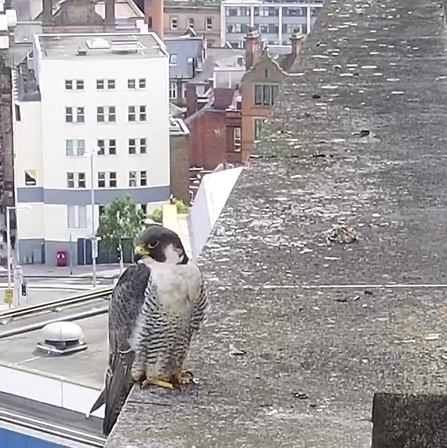Nottinghamshire Wildlife Trust, which helps monitor the peregrine nest on Nottingham Trent University’s Newton Building, has today issued its reflections on what has turned out to be a dramatic, traumatic yet ultimately successful breeding season.
The first reports of breeding activity for the species in the county came in a little more than two decades ago when a pair was noted on buildings in the Peel street area of the City. The pair soon moved to the Newton Building where they attempted to breed and a pair have been present ever since. Over the last twenty or so years the individual birds making up the pairing will have changed a number of times, with the latest new resident, a female carrying ring number P9 replaced the long-term resident female affectionately known as ‘Mrs P’ this year.



